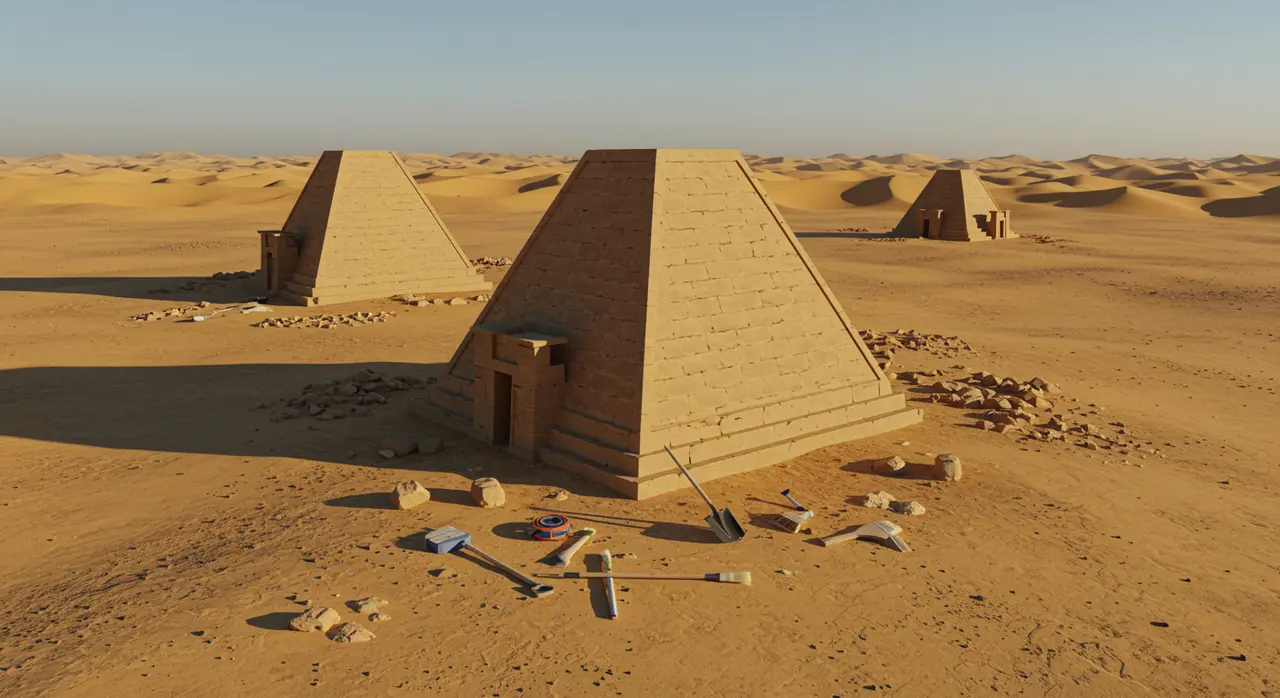Pyramid Tombs in Sudan Reveal Complex Social Hierarchies, Say Tombos Researchers
60 views
A study of pyramid tombs in Tombos, Sudan, has cast new light on ancient burial practices, challenging the long-standing belief that these monumental structures were reserved for society’s elite. Researchers analyzing 110 skeletons unearthed at the site discovered evidence of physical labor in some individuals buried within pyramid tombs, indicating that lower-status laborers may have shared these prestigious burial spaces with wealthier counterparts. This revelation opens a window into the complex interplay of social hierarchy, colonial influence, and cultural aspirations in ancient Nubia.
Rethinking the Social Fabric of Ancient Tombos
The pyramids at Tombos, distinct from their Egyptian counterparts such as the iconic structures at Giza, were not built for royalty but rather for nonroyal individuals, reflecting the nuanced social and colonial dynamics of the region. The study’s findings suggest that burial practices in Nubia may have been less rigidly stratified than previously thought, with social classes intermingling even in death. This challenges the traditional narrative that pyramid tombs served as exclusive markers of elite status and raises intriguing questions about the motivations behind such practices.

Researchers identified skeletal changes consistent with hard labor in several individuals buried within pyramid tombs, a discovery that contradicts the assumption that physical labor was the domain of non-elite individuals alone. The presence of these laborers in such prestigious burial spaces could indicate an attempt to reinforce social hierarchies, with lower-status individuals gaining proximity to elite figures in death as a symbolic gesture of protection or elevated status. Alternatively, it might reflect aspirations for upward mobility, with families of laborers seeking to align their loved ones with the grandeur of pyramid tombs.
The findings also highlight the colonial dynamics at play in ancient Nubia, where Egyptian influence shaped local practices while allowing for regional variations. Unlike the towering pyramids of Giza, which served as eternal monuments to pharaohs, the smaller pyramids at Tombos catered to a broader spectrum of society. This departure from Egyptian norms suggests a localized adaptation of burial traditions, one that may have been influenced by Nubia’s unique social and political landscape.
A Debate Among Scholars
The study has sparked lively debate among archaeologists and historians, with some praising its potential to reshape interpretations of burial practices in the ancient world. By demonstrating that pyramid tombs were not exclusively reserved for elites, the research invites a reevaluation of how social hierarchies were expressed and maintained in death. It also challenges the assumption that physical labor was antithetical to elite status, as some experts argue that wealthier individuals may have engaged in labor-intensive activities, complicating efforts to draw clear distinctions between social classes based on skeletal evidence.
Others caution against overgeneralizing the findings, noting that burial practices could vary widely across different regions and time periods. While the pyramids at Tombos offer valuable insights into Nubian society, they may not necessarily reflect broader trends in ancient Egypt or other parts of the ancient world. The study raises tantalizing questions about whether similar burial patterns existed in Egyptian pyramid tombs, but definitive answers will require further research and comparative analysis.
A Broader Perspective on Death and Society
The findings at Tombos invite us to reconsider the ways in which ancient societies used burial practices to navigate questions of identity, status, and power. Far from being static markers of social hierarchy, pyramid tombs in Nubia appear to have been dynamic spaces where the boundaries between elite and non-elite were blurred, reflecting the complexities of life in a colonial frontier. This challenges modern assumptions about the rigidity of ancient social structures and underscores the fluidity of cultural practices in response to political and economic pressures.
The study also serves as a reminder of the importance of interdisciplinary approaches in archaeology. By combining skeletal analysis with historical and cultural context, researchers can uncover hidden narratives that enrich our understanding of the past. The Tombos findings highlight the need for continued exploration of burial practices in both Nubia and Egypt, as well as other regions influenced by Egyptian culture, to uncover the full spectrum of social dynamics in the ancient world.
In the end, the pyramids at Tombos stand as a testament to the enduring human desire to create meaning in death, whether through the reinforcement of social hierarchies or the pursuit of aspirations that transcend earthly limitations. As scholars delve deeper into the mysteries of these ancient tombs, they not only illuminate the lives of those who built and occupied them but also offer us a richer understanding of the shared humanity that binds us across centuries.